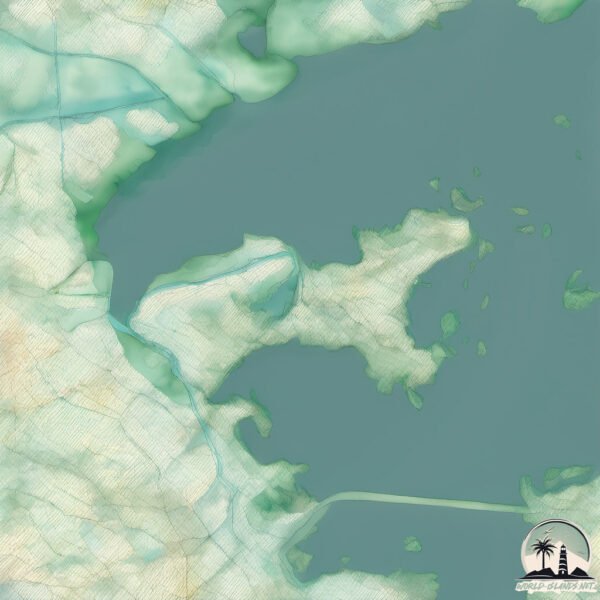Governador Island

Welcome to Governador Island, a Tropical island in the South Atlantic Ocean, part of the majestic Atlantic Ocean. This guide offers a comprehensive overview of what makes Governador Island unique – from its geography and climate to its population, infrastructure, and beyond. Dive into the details:
- Geography and Size: Explore the island’s size and location.
- Climate and Weather: Weather patterns and temperature.
- Topography and Nature: Uncover the natural wonders of the island.
- Infrastructure and Travelling: Insights on reaching, staying, and making the most of your visit.
- News and Headlines: Latest News.
Geography and size of Governador Island
Size: 36.3 km²
Coastline: 42.6 km
Ocean: Atlantic Ocean
Sea: South Atlantic Ocean
Continent: South America
Governador Island is a Medium Island spanning 36 km² with a coastline of 43 km.
Archipel: –
Tectonic Plate: Pacific – The world’s largest tectonic plate, covering much of the Pacific Ocean, known for the Pacific Ring of Fire with extensive seismic and volcanic activity.
The geographic heart of the island is pinpointed at these coordinates:
Latitude: -22.80585392 / Longitude: -43.21240681
Climate and weather of Governador Island
Climate Zone: Tropical
Climate Details: Tropical Savanna, Wet
Temperature: Hot
Climate Characteristics: Defined by distinct wet and dry seasons with high temperatures year-round. Pronounced rainfall occurs during the wet season, while the dry season is marked by drought.
Topography and nature of Governador Island
Timezone: UTC-03:00
Timezone places: America/Sao_Paulo
Max. Elevation: 53 m
Mean Elevation: 16 m
Vegetation: Urban Area
Tree Coverage: 36%
The mean elevation is 16 m. The highest elevation on the island reaches approximately 53 meters above sea level. The island is characterized by Plains: Flat, low-lying lands characterized by a maximum elevation of up to 200 meters. On islands, plains are typically coastal lowlands or central flat areas.
Dominating Vegetation: Urban Area
Regions dominated by human development, including cities and towns, characterized by buildings, roads, and minimal vegetation. Governador Island has a tree cover of 36 %.
Vegetation: 11 vegetation zones – Exceptionally Diverse Island
Islands with more than ten vegetation zones are among the most ecologically rich and varied in the world. These islands are akin to miniature continents, boasting an incredible array of ecosystems. The sheer range of habitats, from high peaks to deep valleys, rainforests to deserts, creates a mosaic of life that is unparalleled. They are crucial for conservation and ecological studies.
Infrastructure and Travelling to Governador Island
Does the island have a public airport? yes.
Governador Island has a public and scheduled airport. The following airports are located on this island: Rio Galeão – Tom Jobim International Airport.
Does the island have a major port? no.
There are no major ports on Governador Island. The closest major port is DTSE / GEGUA OIL TERMINAL, approximately 2 km away.
The mean population of Governador Island is 6353 per km². Governador Island is Densely Populated. The island belongs to Brazil.
Continuing your journey, Ilha da Marambaia is the next notable island, situated merely km away.
NYC’s Best Kept Secret: Governors Island



Brazil is classified as Emerging region: BRIC: Brazil, Russia, India, and China – Economies noted for their rapid growth and increasing influence on global affairs. The level of income is Upper middle income.
News – Latest Updates and Headlines from Governador Island
Stay informed with the most recent news and important headlines from Governador Island. Here’s a roundup of the latest developments.
Please note: The data used here has been primarily extracted from satellite readings. Deviations from exact values may occur, particularly regarding the height of elevations and population density. Land area and coastline measurements refer to average values at mean high tide.
